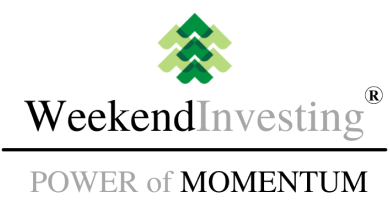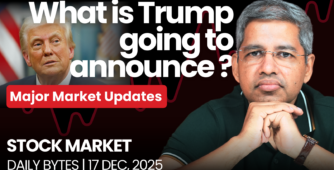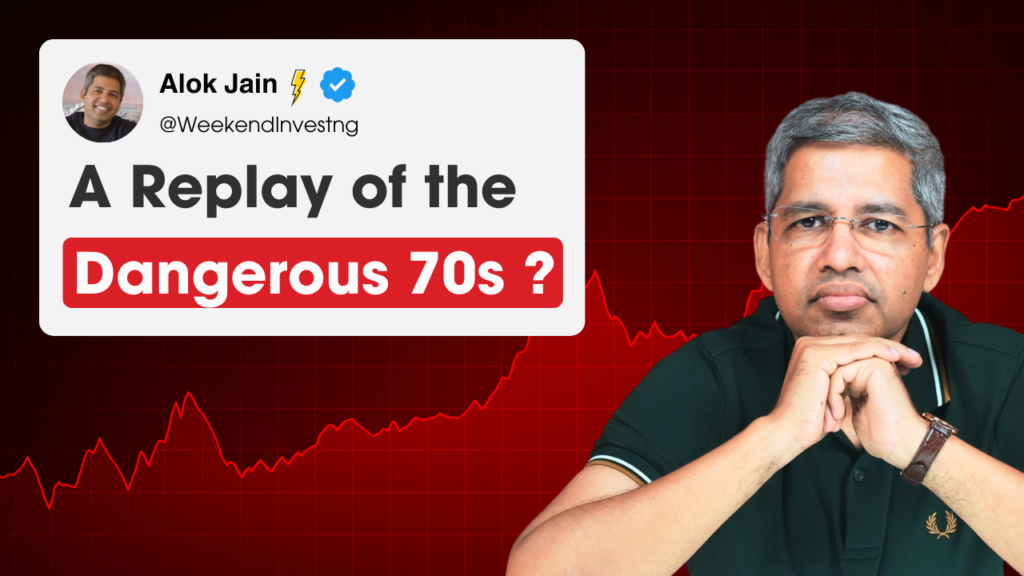
It’s been a decent day in the markets, I’d say. Yesterday, the market made a fool of the bulls—April 1st, April Fool’s Day, after all. But today, the market has been relatively stable, and that’s something to be grateful for.
Tonight, or rather, early tomorrow morning (6 AM India time), we’ll see some big action. Donald Trump is set to speak, and the world will be listening closely. The U.S. Presidency holds immense power, and whatever he says could potentially impact billions of lives. The influence of the U.S. President is real, and it’s something we can’t ignore.
Looking Back to the 1970s
Today, we’re going to dive into a topic that’s been buzzing around recently: the possibility of a repeat of the dangerous 1970s. There’s been a lot of talk about the current market situation resembling the 1970s, and some are wondering whether we’re on the brink of seeing something similar unfold. So, in today’s update, we’ll go through some key data from that era and see how it compares to today.
Where is the market headed?
Market Overview
Today, the markets recovered by 0.72% on the Nifty, and there’s a silver lining. Despite the chorus of naysayers who claim the market can’t go up, history has shown that markets often climb walls of worry. When they do rise, people are always left wondering why, but the market doesn’t care about the ‘why’—at least, not until it’s too late for most.
As I’ve mentioned before, we might be in the midst of an inverted head and shoulders pattern, with the right shoulder still needing to cover some ground. If we break through that, expect a lot of surprised faces.
On the downside, I don’t anticipate seeing the Nifty drop below 23,000. Of course, I reserve the right to be wrong, but the market’s underlying strength seems greater than the prevailing narrative of doom and gloom. Even today, many veteran analysts and fund managers are expressing caution, but I’m not as sure about that outlook.
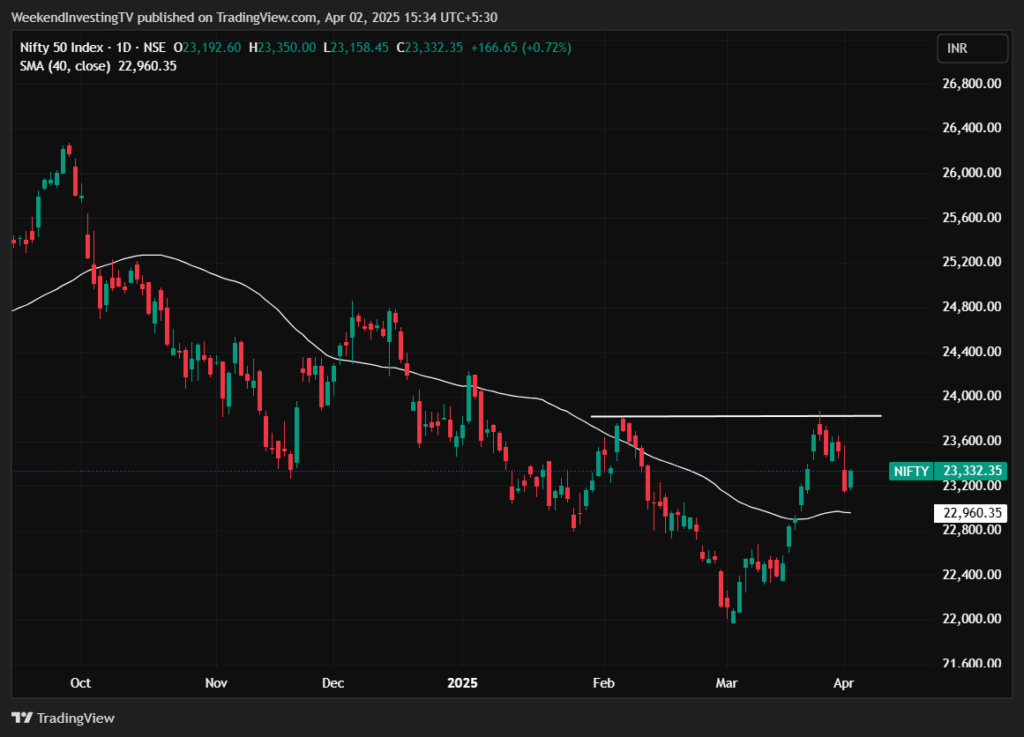
Nifty Next 50
Looking at the broader market, the Nifty Junior made a solid recovery, nearly covering yesterday’s losses with a 1.15% gain.
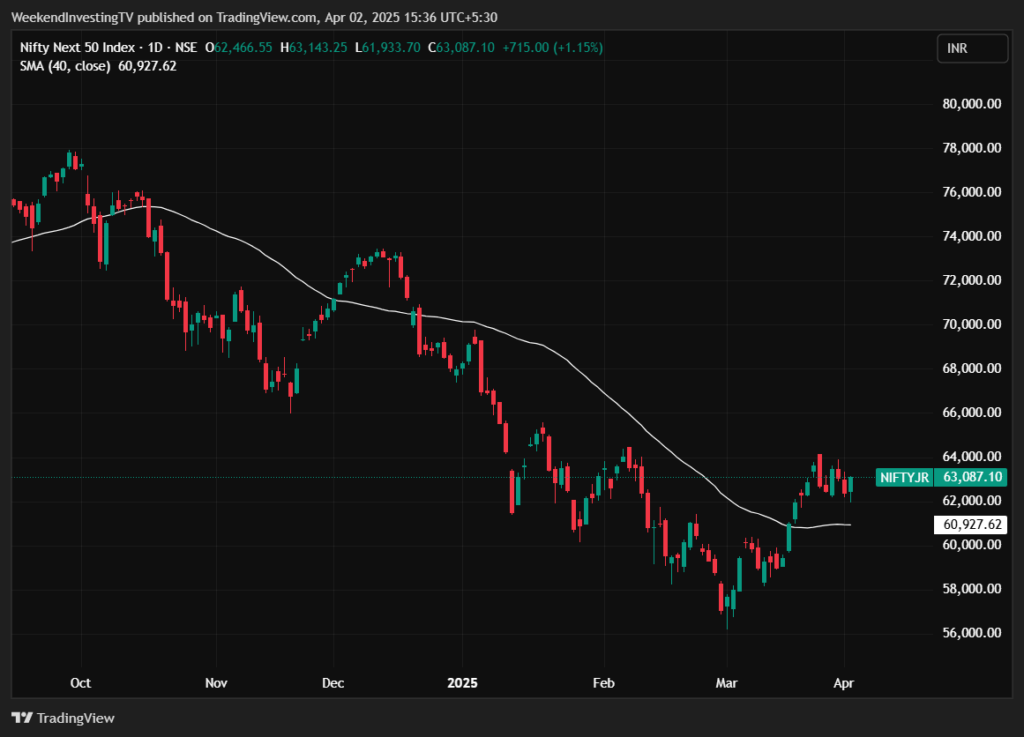
Nifty Mid and Small Cap
Midcaps saw a 1.4% rise, and we’re not just at yesterday’s close, but at yesterday’s high. This is a strong sign of resilience.
Small caps, too, gained 1%, marking a recovery after the past couple of down days. The chart patterns suggest a lot of optimism.
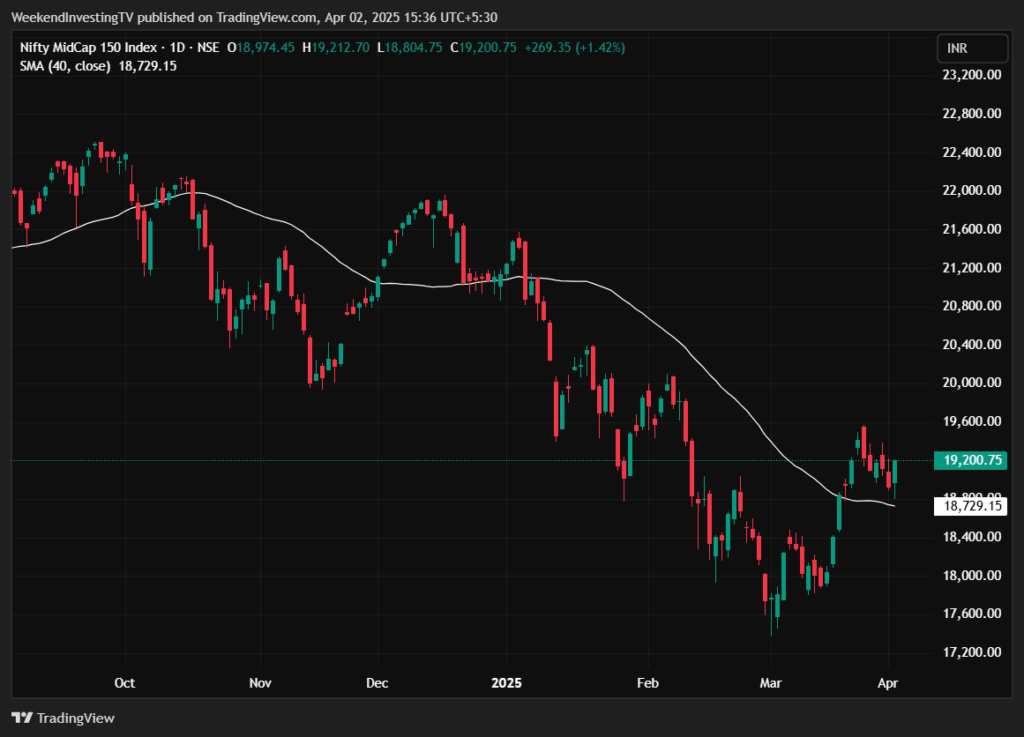
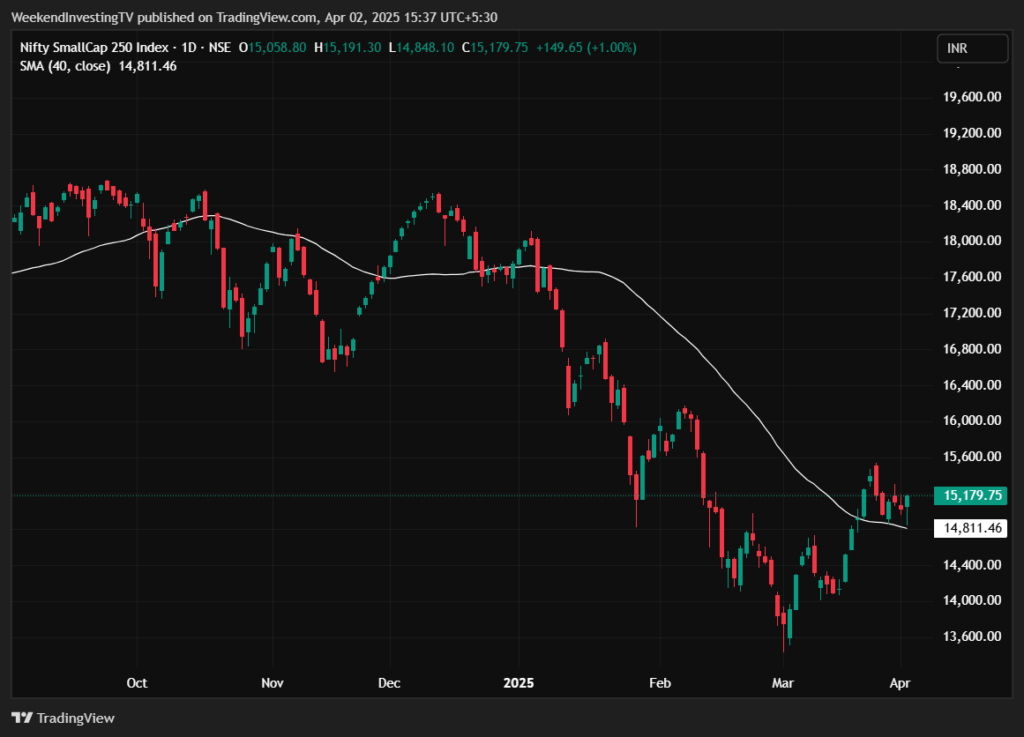
Nifty Bank Overview
On the sectoral front, Bank Nifty also recovered by about 1%. Despite some fluctuations, it’s clear that the market isn’t ready to give up on its gains just yet.
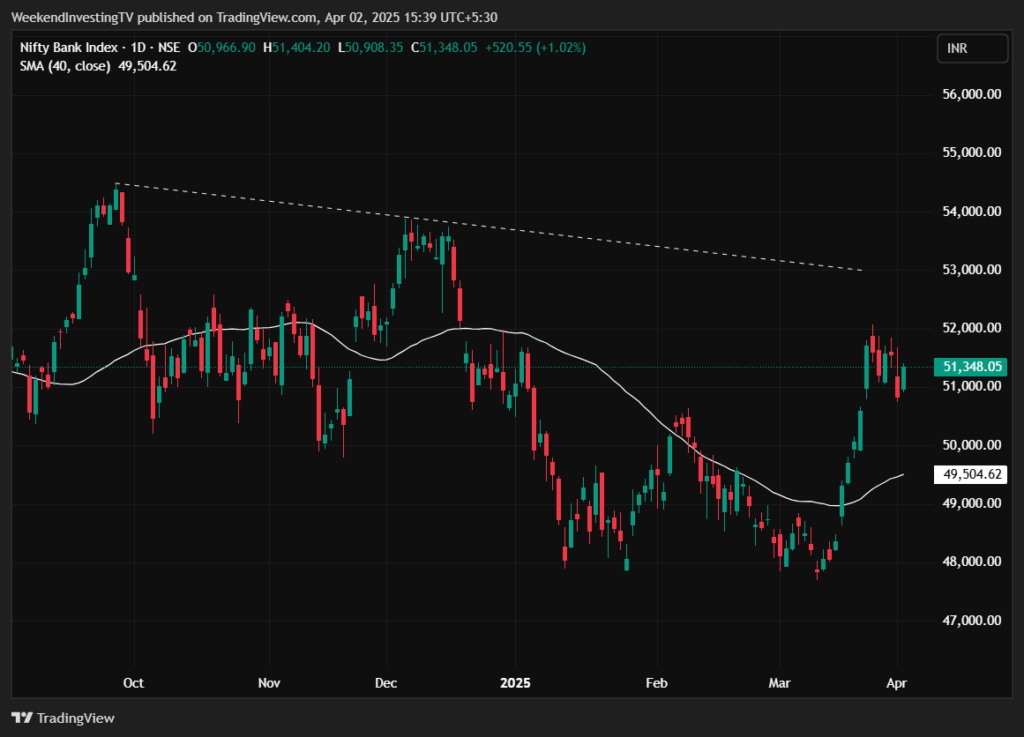
GOLD
Gold is another asset seeing consistent upward movement, inching up by half a percent daily. It’s now trading above 91,000, and although some naysayers might claim it’s due for a crash, I wouldn’t bet against this bull rally. Gold broke out at 88,000, retested the breakout, and is continuing its climb. Unless it drops below 88,000, this remains a strong bull market in gold.
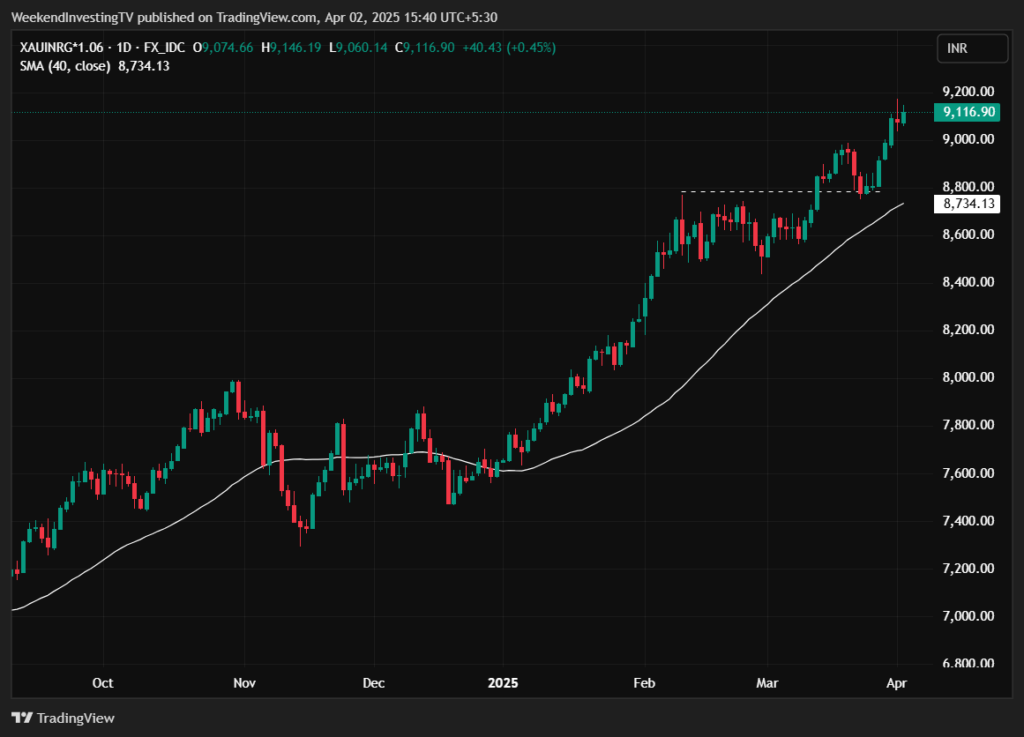
Advance Decline Ratio
In terms of market breadth, April 2nd showed a strong performance with 382 advances versus 118 declines. This is the best market breadth we’ve seen in the last five sessions, which is a positive signal for the overall market health.

Heat Maps
Several individual stocks have done well today. HDFC Bank, Infosys, Tech Mahindra, and Maruti all gained, with Zomato seeing a 5% increase after being included in the Nifty. Tata Consumer also surged 7%, showing that the market is willing to reward certain stocks. On the flip side, Bharat Electronics saw a decline of more than 3%, but that’s one of the few losers on the day.
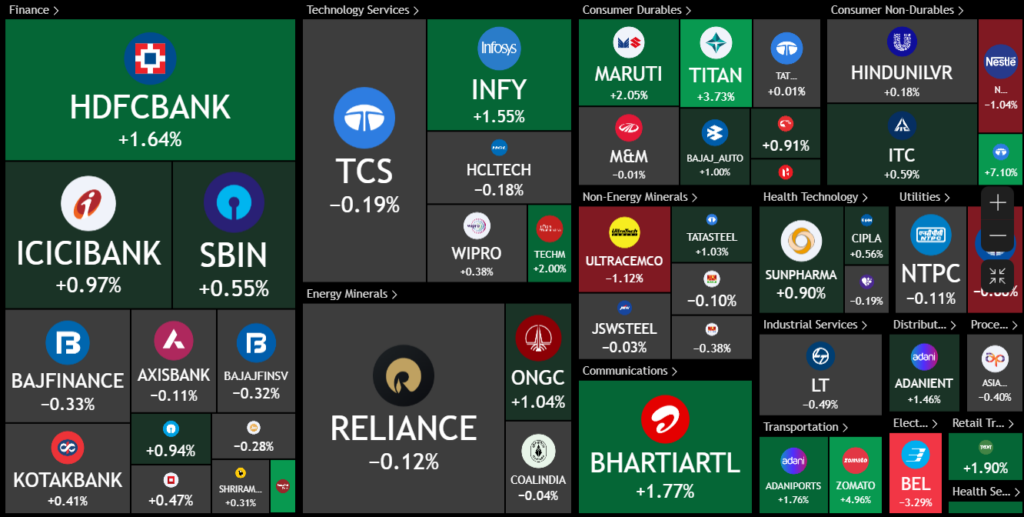
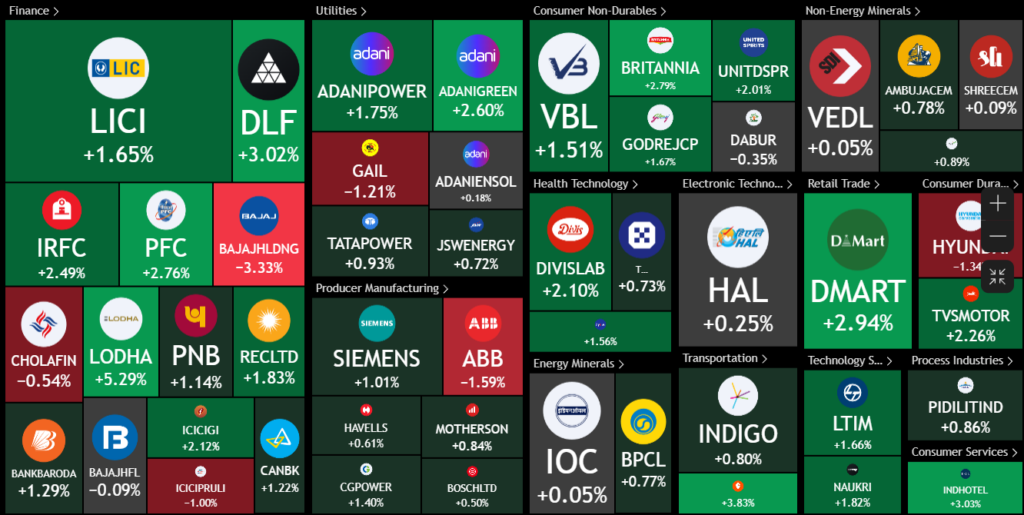
Sectoral Overview
Real estate made a sharp 3.6% move today, with stocks like Lodha, Godrej Properties, Prestige, and DLF leading the charge. Capital markets, tourism stocks, and consumption stocks also showed positive trends. On the flip side, CPSE stocks and defense stocks showed mild declines, but nothing too significant.
Looking at the longer-term picture, sectors like defense, PSU banks, and energy have made impressive gains over the past month. Defense stocks are up 23%, and public sector enterprise stocks are up 16%. On the other hand, auto and real estate stocks have seen some notable declines over the last six months.
For a more in-depth analysis of sectoral performance, be sure to check out our weekly review, which includes a momentum score matrix for various sectors. It’s a must-watch, released every Saturday at noon.
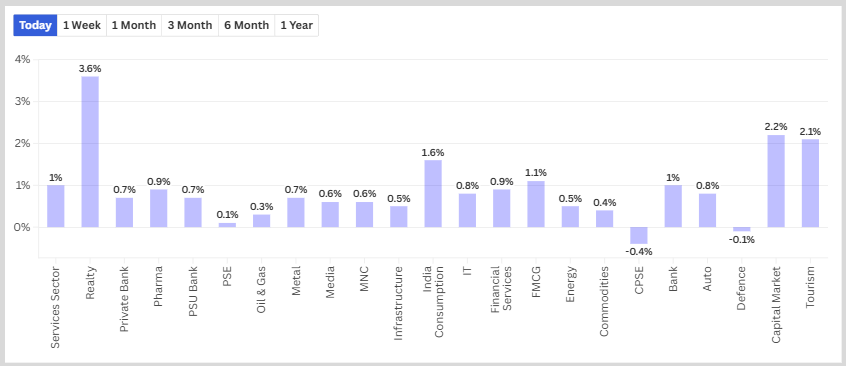
Sectors of the Day
Nifty REALTY Index
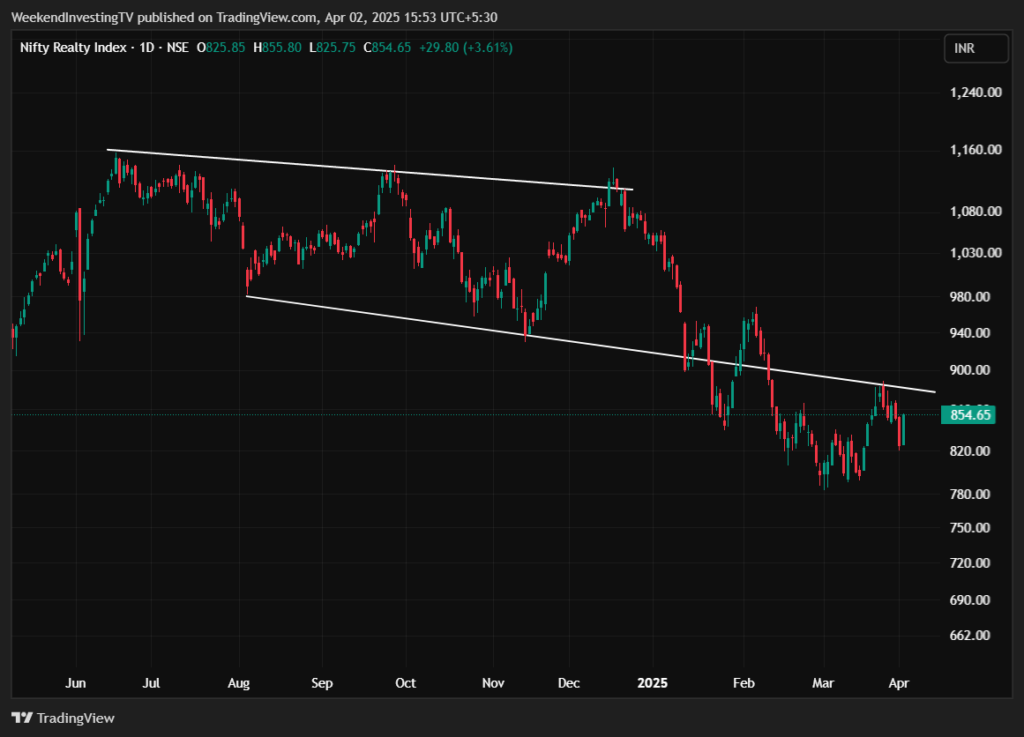
Story of the Day : The 1970s – A Period of Economic Turmoil
Now, let’s get into the heart of today’s topic: Are we headed for a repeat of the dangerous 1970s?
Most of you watching were born in the 1990s or later, and likely haven’t experienced firsthand the kind of economic turmoil that was prevalent in earlier decades. Since 2004, we’ve seen relatively stable markets, with only the Global Financial Crisis (GFC) and the COVID crash shaking things up. But if you look further back—30, 40, or even 50 years ago—the economic conditions were starkly different.
The 1970s, in particular, was a decade of economic chaos, often cited as the rare period of stagflation—where economic growth stagnated, inflation soared, and unemployment remained high. These three factors combined created a period of economic instability that most people today don’t fully understand.
During this tumultuous decade, inflation in the U.S. averaged over 7%. The oil shocks of 1973 and 1979 triggered an energy crisis, and the U.S. abandoned the gold standard in 1971, which eroded confidence in the U.S. dollar. As a result, the Fed Funds rate shot up from 4% to 20% by 1980.
A Decade of Economic Uncertainty
The 1970s saw the S&P 500 essentially stagnate for 14 years. The market went through multiple corrections—36%, 50%, and 28%—and many investors who started their journey in 1969 would have been severely disillusioned by the lack of returns. This was a time when confidence in the market could easily have been shattered.
The turning point came in 1971 when President Nixon ended the Bretton Woods Agreement, severing the U.S. dollar’s link to gold. This allowed the Federal Reserve to print money without having to back it up with gold, which led to high inflation and a devalued dollar.
The Gold Rush of the 1970s
Gold, on the other hand, saw explosive growth during this period. From 1971 to 1980, the price of gold shot up from $32 per ounce to $800, a staggering 1800% increase. This period saw gold grow at a compound annual growth rate (CAGR) of 31%. In contrast, the S&P 500 returned just 35% from January 1970 to January 1980.
While this might sound unbelievable, it actually happened. The question remains: could something like this happen again?
Oil and Inflation: The Key Drivers
The oil shocks of the 1970s were another major factor that shaped the decade. In 1973, OPEC countries cut oil supply, causing oil prices to quadruple almost overnight. A similar shock occurred in 1979 during the Iranian Revolution. This led to fuel shortages, skyrocketing transportation costs, and inflation.
The inflation rate peaked at 13.5% in 1980. To combat this, the Federal Reserve raised interest rates dramatically, with the Fed Funds rate eventually reaching 20% by 1981.
The Path Forward: Will History Repeat?
So, where do we stand today? Many signs point to the possibility of repeating the economic environment of the 1970s. We’ve seen similar trends in inflation, rising oil prices, and the devaluation of currencies. While it’s impossible to predict the future with certainty, the historical parallels are certainly worth considering.
Whether we see gold prices soar, oil prices spike, or interest rates climb remains to be seen. But the lessons from the 1970s are clear: economic conditions can change rapidly, and it’s crucial to be prepared.
Conclusion
As we reflect on these potential outcomes, it’s clear that we need to prepare our financial portfolios for a range of scenarios. Just like we buy life insurance in case of an emergency, we should ensure that our investments are diversified and resilient enough to handle whatever may come our way.
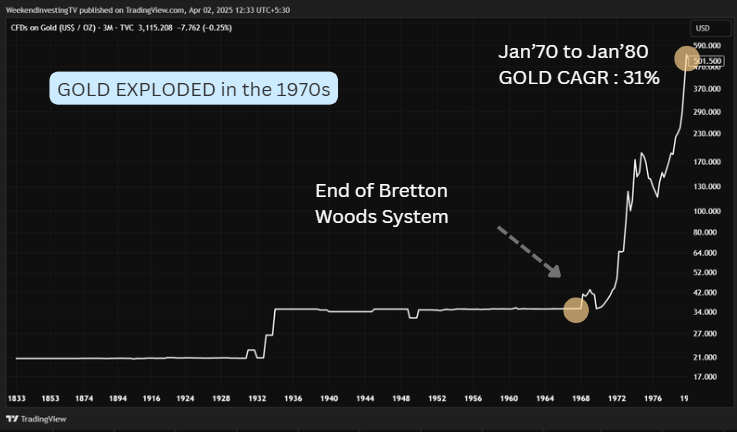
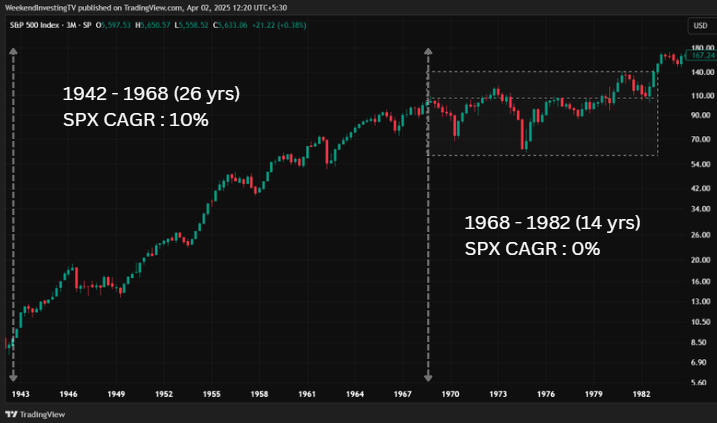
WeekendInvesting launches – The Momentum Podcast
Get ready to dive into an inspiring investing tale!
Join us on WeekendInvesting’s The Momentum Podcast Epsiode 1 as Mr. Yassar, a Dubai-based engineer-turned-investor, reveals his 15-year journey—from Wall Street fascination to mastering systematic trading.
Hear Alok and Yassar talk about Real estate, Gold, Crypto and many hard-earned lessons, and practical tips for navigating markets.
Disclaimers and disclosures : https://tinyurl.com/2763eyaz
